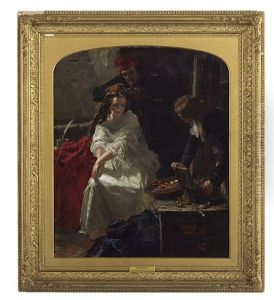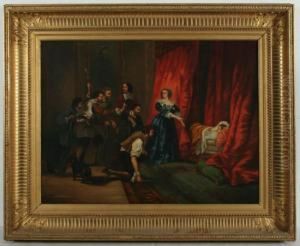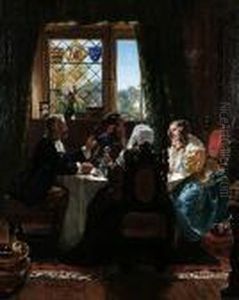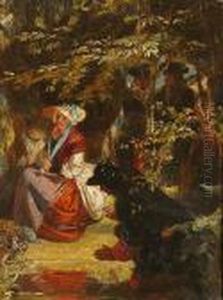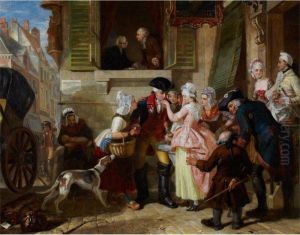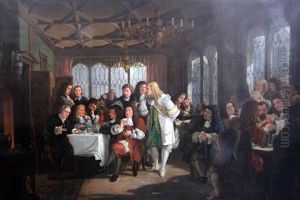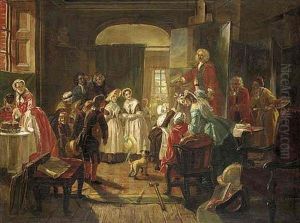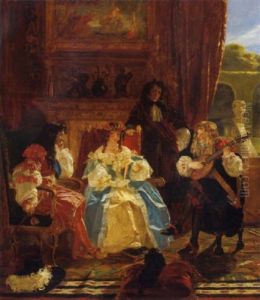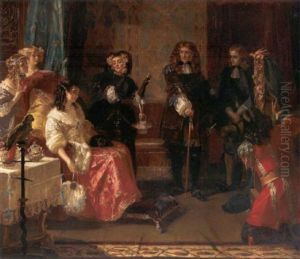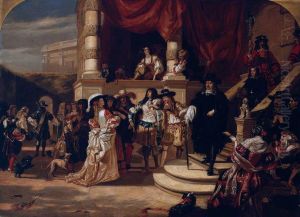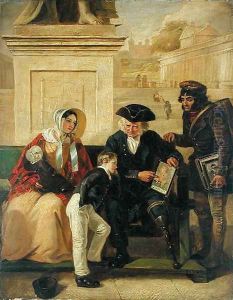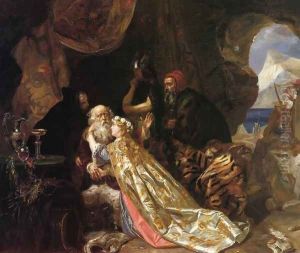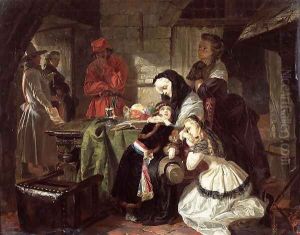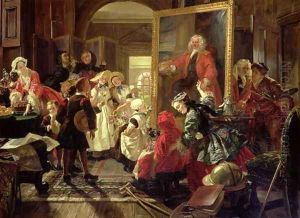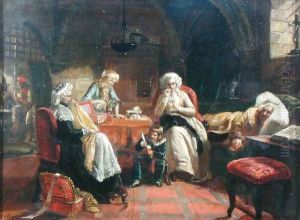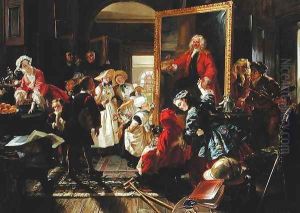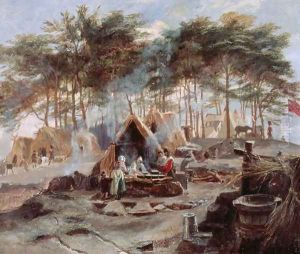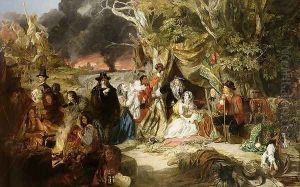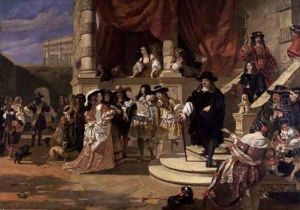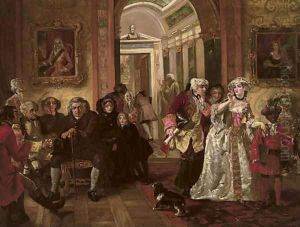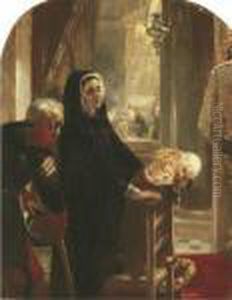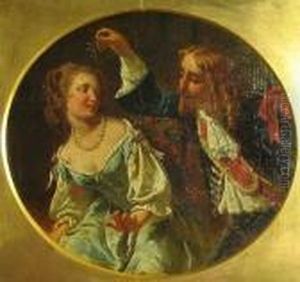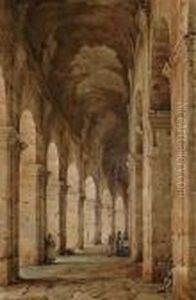Edward Matthew Ward Paintings
Edward Matthew Ward was an English Victorian narrative painter whose work focused on historical scenes and genre paintings. Born on July 14, 1816, in Pimlico, London, he was the son of Edward Ward and Henrietta Ward. He demonstrated a talent for art at an early age and received his formal education at the Royal Academy Schools. Despite the initial resistance from his father, who wished him to pursue a career in medicine, Ward was determined to become an artist.
Ward's early work was influenced by the Romantic movement and the grand historical paintings of the Old Masters. He traveled extensively throughout Europe, particularly in Italy, where he was inspired by the works of Renaissance artists. During his time abroad, he also honed his skills and studied the techniques of fresco painting.
Upon returning to England, Ward started to establish himself as a painter of historical subjects. He gained recognition for his meticulous attention to historical accuracy and detail. In 1843, he married Henrietta Ward, who was also an accomplished artist in her own right. Together, they became a part of London's artistic circle.
One of Ward's most famous works is 'The South Sea Bubble', a scene depicting the infamous financial scandal of the early 18th century. His paintings were characterized by their dramatic intensity and vivid storytelling, which resonated with the Victorian public's taste for melodrama.
Throughout his career, Ward exhibited regularly at the Royal Academy and other prominent venues. In addition to his historical paintings, he received several commissions to paint frescoes for the newly rebuilt Houses of Parliament in London. This prestigious project further cemented his reputation as a leading historical painter of his time.
Edward Matthew Ward's health began to deteriorate later in life, and he suffered from mental health issues, which impacted his ability to work. He died on January 15, 1879, in Kensington, London. His legacy is preserved through his paintings, which continue to provide a visual narrative of British history and remain of interest to art historians and the public alike.




